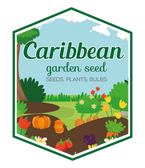When To Plant Flowers
Planting flowers in a garden requires careful consideration of the type of flower. Whether it is a perennial, annual, or bulb, as well as its sensitivity to frost, will determine the optimal time to plant. Similar to planting vegetables, there is an optimal time for starting seeds and transplanting young plants outside.
When transplanting plants into the garden, it is important to consider the appropriate amount of lead time. Starting too early may result in a fragile and tall plant, while starting too late can lead to an unprepared plant that may not survive well outside. Be sure to carefully plan before planting.
Flowers Growing Chart
| Variety |
Indoor Sowing Date |
Days to Max Germination |
Soil Temp F° |
Planting Depth |
Weeks to Transplant |
| Ageratum Alyssum Amaranthus Aster Bachelor Button Baby’s Breath Celosia Coleus Cosmos Daisies Geraniums Impatiens Marigolds Moon flower Morning Glory Nasturtium Pansy Petunia Salvia Sun flower Sweet Pea Vinca Zinnias |
Dec-Mar Dec-Mar Dec-Mar Jan-Apr Feb-Mar Feb-Mar Jan-Apr Dec-Mar Jan-Apr Feb-Mar Nov-Feb Dec-Mar Jan-Apr Feb-Mar Feb-Mar Feb-Mar Nov-Feb Dec-Mar Dec-Mar Feb-Mar Feb-Mar Dec-Mar Jan-Apr |
7 8 14 8 8 8 10 10 5 8 4-10 15 7 8 8 8 16 10 15 6 8 15 7 |
75-78 78-82 68-70 70-75 68-70 68-72 70-80 70-75 68-72 70-75 70-75 68-72 70-80 70-75 70-75 70-74 55-65 70-80 75-78 70-80 70-75 70-80 68-72 |
1/8” 1/6" 1/2” 1/8" 1/4” 1/4" 1/8” 1/4" 1/4” 1/4” 1/2” 1/8” 1/8" 1/4” 1/4” 1/2” 1/8” top 1/10” 1” 1” 1/4" 1/8” |
8-10 10-12 7-9 8 4-6 6-8 6 6-9 6 5-6 14-16 10-12 6-9 6-8 4-5 6 6-10 10 9 N/A 4-6 12 5-8 |
Perennial Flowers
| Variety | Planting Depth |
Indoor Sowing Date |
Outdoor Sowing Date |
Soil Temp F° |
Height" | Spread" |
Soil | Light |
| Achillea Black Eyed Susan Blanket Flower Butter y Flower Candytuft Cone flower Coreopsis Dahlia Daisies Delpinium Dianthus Foxglove Geraniums Hosta Hollyhock Lupine Penstemon Phlox Poppy Primrose Rudbeckia Tansy Viola |
1/8” 1/4” 1/8" 1/8” 1/8” 1/4" 1/8” 1/8” 1/8" 1/8” 1/8" 1/8” 1/8” 1/2” 1/8" 1/8” Top 1/8” 3/8" 1/8” 1/4” 1/4" 1/8” |
6-8 N/A 6 6-8 6-8 N/A N/A 6-8 N/A 6 6-8 N/A 6-10 6-10 6-8 N/A 6-8 6-8 6-8 N/A N/A N/A 6-8 |
Early Anytime 1-4 after 1-4 after Early Early 1-4 after Early Early 1-4 after Early Early 1-4 after Early Early 2-4 after 2-6 Early Anytime Early Anytime Early Early |
60 60 70 70 65 70 70 65 60 60 70 65 70 70 65 70 70 60 60 60 60 65 65 |
24-36” 24-36” 24-40” 24-36” 1-15” 24-42” 18-48” 12-36" 12-36” 12-48” 18-24” 24-60" 6-36” 24-40" 48-72” 24-36” 12-36" 6-18” 24-30” 8-15” 24-36” 36-48” 4-8” |
18” 18” 14-16” 18-20” 8-10” 12-18” 6” 16-24" 8-20” 18” 10-12” 24" 6-20” 24-40" 18-24” 12-14” 18" 8-10” 8-18” 12-18” 12-24” 6” 6” |
Average, well-drained Average Loose Sandy, well-drained Well-drained Well-drained Moist Rich, fertile Rich,well-drained Average Rich, well-drained Average Any soil Well-drained Rich, well-drained Average Loose soil Rich, loose Any soil Rich, moist Average Average Average |
Full Full Full Partial Partial Full Full/Partial Full Full Full/Partial Full Full/Partial Full/Partial Partial Full/Partial Full/Partial Full Full Full/Partial Full/Partial Full Full/Partial Partial |
When to Plant Perennial Flowers
Perennials are plants that can survive for more than one year. Although they may die down during the winter months, their roots remain alive and will produce new foliage as the spring brings more sunlight and warmth. While some perennials will bloom in their first year, others may require time to establish themselves, especially if planted later in the growing season.
Start Seeds in the Spring
While a few perennials may be difficult to start from seed, many are relatively simple to grow and offer a cost-effective means of filling a new flower bed. Keep in mind that certain seeds require exposure to cold temperatures before they will sprout and may have a longer germination period of 3-4 weeks, so it is best to start them earlier than others.
Plant Mature Perennials in the Fall
IWhen considering the addition of mature perennial plants to your garden, it is recommended to plant them in the fall. This allows for the cold temperatures and moisture of winter to promote germination. It is important to plant them at least six weeks before the first fall frost date to ensure proper settling before the winter season. Keep in mind that roots will continue to grow even when temperatures are in the 40s.

![[Seeds] - Caribbeangardenseed](http://caribbeangardenseed.com/cdn/shop/files/gift-card-gift-card-1_1024x1024_dfa857db-9150-4315-a362-7f0bb3fb9c47_60x28.png?v=1722895789)